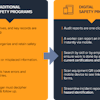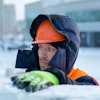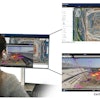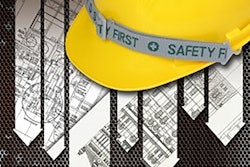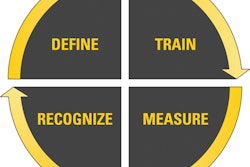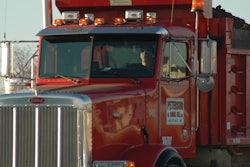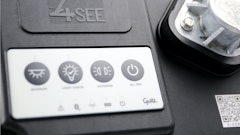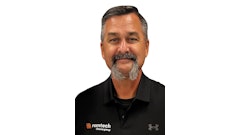
We are entering the annual "high season" for accidents and injuries. There is a seasonal bell curve phenomenon reflecting the increase in accidents of all types, and the smart thing to do right now is to keep reading and follow this advice. The safety community has not exactly figured out what causes this increase, but the list of culprits includes: distractions, daydreaming, longer daylight hours, change in sleeping patterns, poor dietary habits, vacation planning, recreational pursuits, summer driving, kids out of school, etc.
The uptick is not likely caused by any one or two of these, but a combination of factors.
The antidotes include:
1. Hold more frequent safety meetings with your crews. Daily in some cases, if you are doing high-risk work, such as highway and infrastructure work. Remind employees to STAY FOCUSED . In your meetings, avoid reading generic topics from the page. A backhoe operator really does not have a big issue with Hazard Communication, but power lines, underground utilities, three point stance, people in the swing radius, those are important. You should be motivating your crews with real-life factual and job specific safety information.
2. Make sure everyone on the ground is wearing high-visibility apparel. The more the better. The number one statement on serious accident reports: “I never saw them.” Ramp up the amount of high vis gear. And here’s another tip: NO CAMO!!
3. Get the lead out. Some of the most advanced safety programs (and an increasing number of insurance companies) are now requiring that contractors adopt warm up/calisthenics exercises for their crews prior to starting work. This includes laborers, carpenters, machine & equipment operators, truck drivers, inspectors, surveyors, etc. Because we also have an aging – not to mention overweight – workforce, this is an important step. Be prepared to answer the question: “You want me to do WHAT?” Yeah Lennie, put down that bag of cheeze crackers and exercise!
4. Three point stance. The leading cause of injury to drivers and operators is falling while climbing in and out of the cab. This is a function of frequency. These guys are up and down many times per day. Look at the steps or rungs on the rig. Are they adequate for safe climbing? Call the mechanic over to add a step or grab rail when needed. There’s no rule saying you can’t make it easier and safer for your guys to climb.
5. Hydrate. This is important year ‘round, but especially in warmer months. And for obvious reasons. Proper hydration is tied to alertness, fatigue, concentration and a host of other factors. Avoid energy drinks and carbonated sodas. Water, citrus drinks, Gatorade, Squincher, electrolyte replacement, ice coolers – all good.
6. Avoid direct sun exposure as much as possible. Cover up exposed skin, it’s not a beauty contest. Provide sun block, umbrellas, wide brim hard hats, nape protectors, long sleeve/lightweight shirts. Some new engineered garments have high sun block ratings. Do some research. Reduced exposure also minimizes fatigue. Plan the job when possible to avoid direct sun exposure.
7. Be aware of diet and circadian rhythms. Remind your crews to eat healthy as much as possible. In warm weather, the mid-day meal should be light and preferably grease free. Avoid fast food. Recommended are salads or sandwich, fruits and veggies. This reduces the metabolic load on the digestive system and helps minimize the “post-lunch dip” that causes mid-afternoon drowsiness. There is twenty times as much convertible energy in a single orange as there is in a bag of freedom fries, and citrus is converted directly to energy while starch and grease takes hours to digest. Jethro, pass the lemonade please.
8. Avoid over-use of tinted lenses. This is an often overlooked issue on a lot of jobs. The eye needs light to see properly. A common problem is wearing tinted lenses all day, every day, no matter what the sky looks like. Crews should be reminded to switch to clear lenses when they are in shaded areas, at dusk, indoors, at night, etc. Tinted lenses are usually best for long range, open field viewing such as driving on interstates. For up close work, working in a trench, tight proximity work, using power tools, etc. you should be wearing clear lenses. It’s not a fashion show, it’s a work site.
9. Night work. You’d best be holding a safety meeting at the start of every shift and eyeball the crew to make sure they are properly rested. Human alertness naturally decreases after midnight, precisely when the bars are emptying out. Ramp up the amount of high viz apparel and retro-reflective fabric. Use “blue-light” (police) presence on road jobs. Make sure your vehicle warning strobes are visible to approaching traffic. Plan for longer buffer zones, more cones or barrels, and position safety spotters (in full body Class E High Viz Apparel) well ahead of highway work zones. Spotters should have an air horn or whistle for immediate warning of errant drivers.
10. Defensive driving/parking/backing. This is a topic more suited to a day-long seminar, but here are some tips:
- Use daytime running lights on everything that moves
- Use the four-second rule for following distance
- Slow down BEFORE approaching intersections
- Avoid road rage situations – drivers need to stay cool no matter what
- Turn your head and LOOK before pulling out. A lot of times a driver will incorrectly use only their peripheral vision to detect oncoming vehicles . . . while wearing tinted lenses, on a cloudy day. DUHHH! Crash avoidance is a function of SEEING clearly.
- Avoid backing whenever possible by parking in a clear area. If a rig has to back up, assign a spotter or instruct your driver to get out and look behind the vehicle. Passengers are not tourists. They can act as spotters.
- Enforce the rule: NO TEXTING. This includes extended gabbing on the phone, checking e-mail, programming the GPS, etc. Minimize distractions.
- Set out a warning cone when the vehicle is parked. The cone identifies your rig as an attended work vehicle, subject to move. Most folks will give you extra room.
12 Steps to Backing Equipment Safely
Top Ten Defensive Driving Tips For Contractors
In the short time it took to write this article, a Virginia highway worker was killed in a traffic wreck, a fertilizer plant blew up in Texas and one of the kids in my office had a rear end crash. You can take the above advice to heart and act on it now, or re-read this article while waiting in the emergency room. Safety is not something you take off the shelf only when you need it. It has to be a permanent CULTURAL VALUE within your organization.
Enjoy the Summer!

